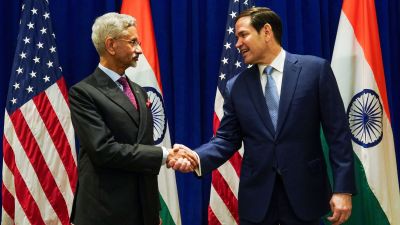Hijacked foreign planes won’t be allowed to land in India
The Government, in its landmark anti-hijack policy cleared by Cabinet Committee on Security (CCS) last week, has said that any foreign-regis...

The Government, in its landmark anti-hijack policy cleared by Cabinet Committee on Security (CCS) last week, has said that any foreign-registered aircraft hijacked in Indian skies will not be allowed to land in the country.
According to the policy, all efforts will be made to ensure that the plane makes a safe and quick exit from Indian airspace. Indian fighters will escort the plane and ensure that 25 nautical miles airspace is cleared around the hijacked aircraft.
However, the policy does take note of India’s international obligations and allows for permission to land in unavoidable circumstances—for instance, when a plane has run out of fuel. In such a case, further action will be taken in consultation with the country concerned—measures like immobilising the aircraft, which is mandatory for Indian-registered aircraft, will not be automatically done.
As reported first by The Sunday Express on August 14, India has adopted a tough hijack policy which specifies—for the first time—that a hijacked aircraft may be shot down.
For this, the policy has laid down a mechanism to coordinate actions between the Air Traffic Control (ATC), Air Force and the top levels of decision-making like the Committee of Secretaries on Aircraft Hijack (COSAH) and the CCS.
Here’s how that process works:
• On noticing any suspicious activity or in case an aircraft issues a hijack alert, the ATC Watch Supervisory Officer (WSO) will inform the Joint Control and Analysis Centre (JCAC) manned by IAF officials.
• The JCAC will observe and analyse the situation with the help of inputs from the ATC. Based on this, it will alert the IAF’s operational wing, which is responsible for giving orders to fighter aircraft.
• Once an aircraft has been declared “rogue”—after it has ignored ATC and Air Defence warnings—the WSO will be asked to activate the Central Committee headed by the Director General of Civil Aviation (DGCA).
This will automatically set into motion all other procedures, with the COSAH acting as the Crisis Management Group and CCS as the apex decision-making body.
If the aircraft aligns itself to a strategic target like Rashtrapati Bhavan, Parliament House and other important government installations, it will be declared a ‘threat’ and the CCS can take a decision to shoot it down.
However, the decision to declare a ‘‘rogue’’ aircraft as a threat lies with the Air Headquarters—the executive authority in such a situation.
The policy, however, makes it clear that the pilot of the fighter aircraft will not take an independent decision, regardless of what the hijacked aircraft may do. In fact, fighters will have to maintain a distance of over 500 feet from the hijacked aircraft while carrying out any interception exercise.
To ensure the best contact options between the aircraft and the ATC, the policy requires all airlines in India to provide for alternate communication equipment on board their planes. This includes cellular or satellite-based phones.
Besides, the policy makes it mandatory for all airports to put in place a contingency plan that has to be approved by the Bureau of Civil Aviation Security. This plan will cater to an Aerodrome Committee which has to be headed by the concerned Home Secretary in state capitals, District Magistrates in districts and by Airport Director in aerodromes outside the airport.
In Delhi, the Central Committee headed by the DGCA will act as the aerodrome committee, which will include the Airport Director of the Indira Gandhi International Airport.
Photos


- 01
- 02
- 03
- 04
- 05





























